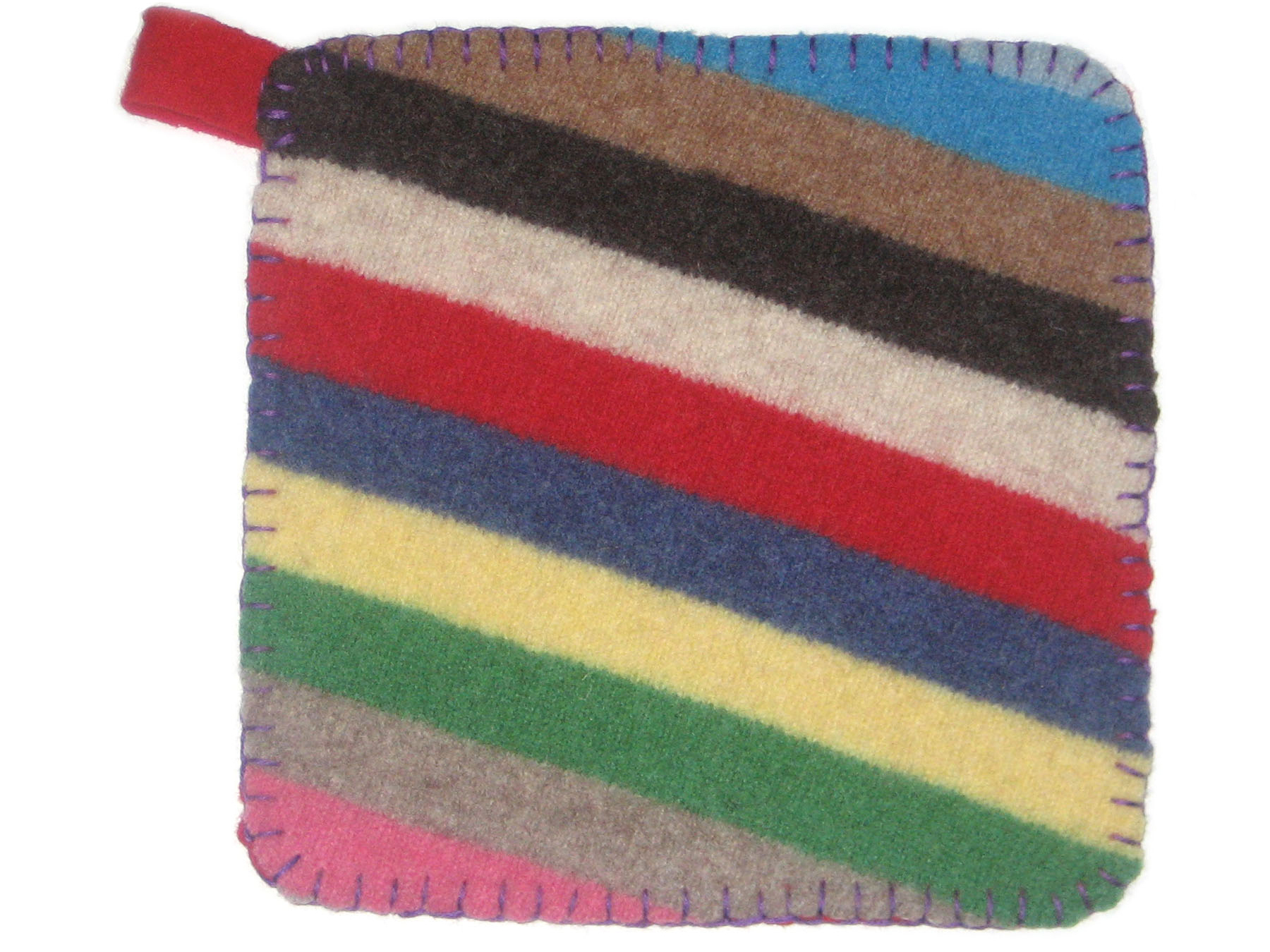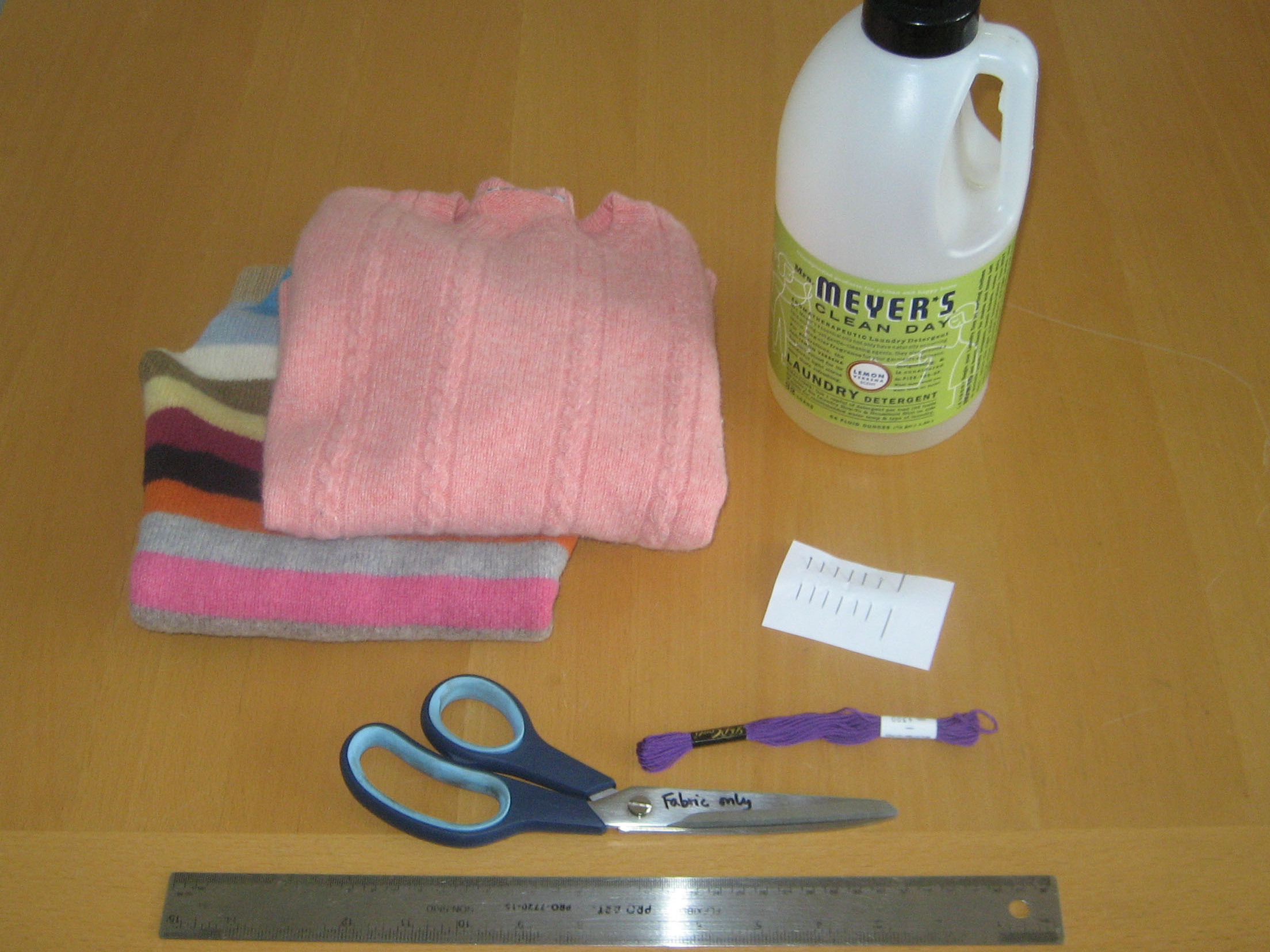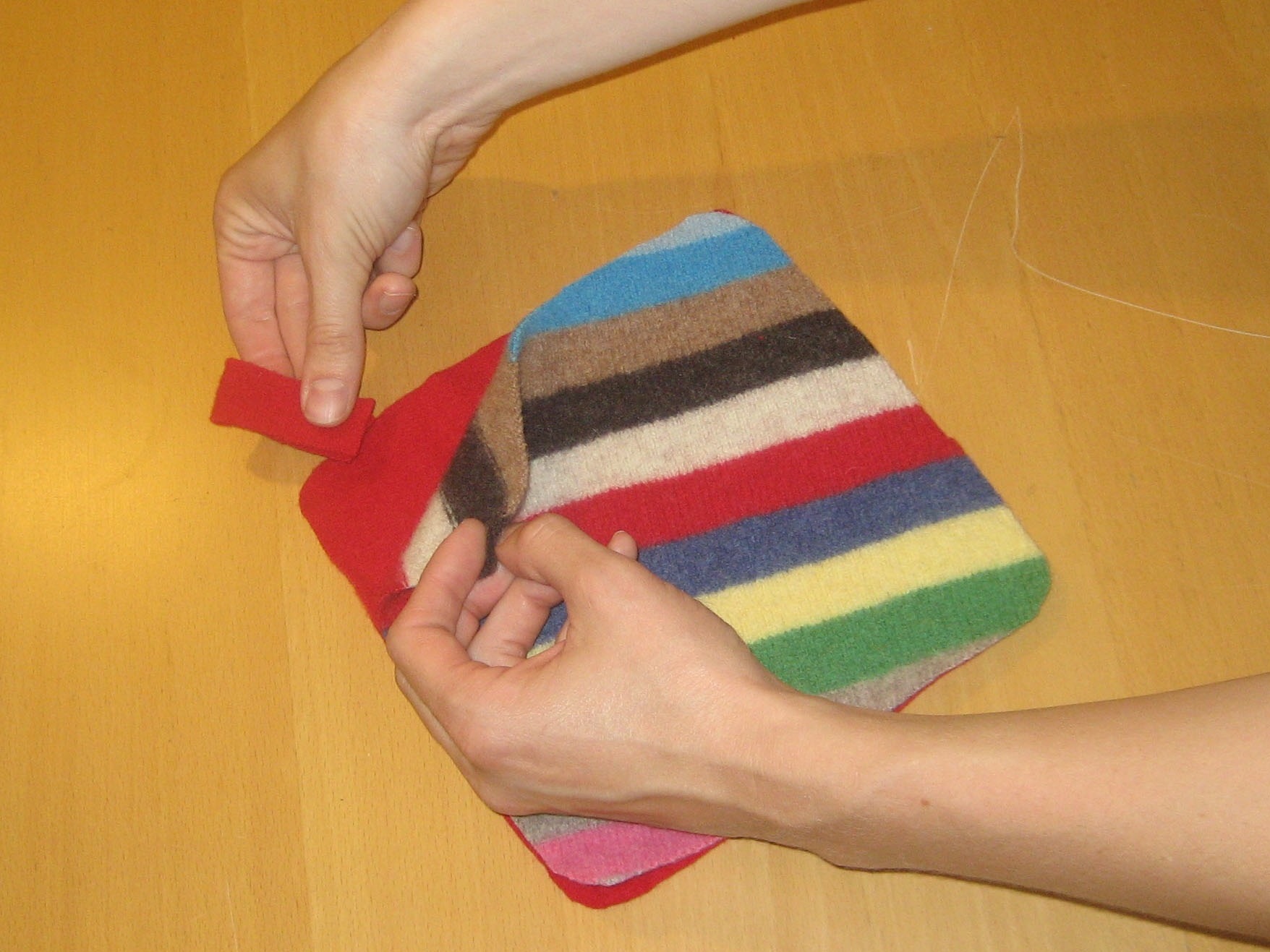Agitating wool in water causes the fibers to bind onto each other and shrink. The great news is that this binding action creates a dense, soft material whose raw edges won’t fray. This is known as felting.
The next time your favorite wool sweater accidentally slips into the wash and shrinks to oblivion, take another look. See it as raw material for your next craft project. You might even start shrinking sweaters on purpose.
Wool is a natural fire retardant, so it works well as a potholder. That doesn’t mean you should put it directly on a flaming stove, but it will resist fire better than cotton or polyester.
















